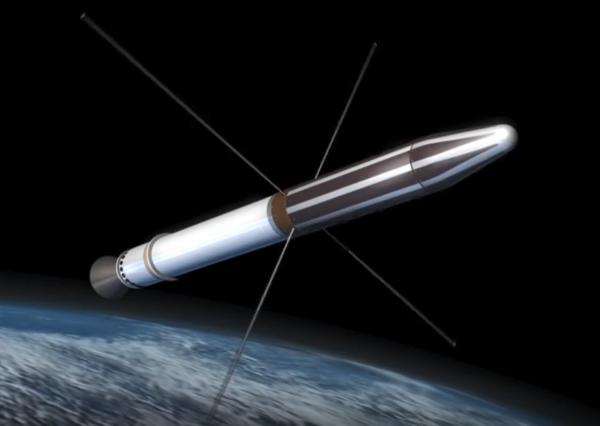
Time flies when you're visiting space, the moon ... and the heavens beyond. So much so, in fact, that after our planet's last full trip around the Sun we've reached another milestone: 60 years ago today the United States began its exploration of space.
Although it's easy to become blasé about liftoffs, and orbits, and missions, and spacewalks and the intermittent hubbub emanating from the International Space Station – all amazing when you stop and really think about it – maybe a moment of reflection is warranted today to recognize NASA's first satellite launch and "America’s very first space science discovery."
That event – discovering the Van Allen radiation belts circling Earth – took place after the launch of the Explorer 1 satellite from Cape Canaveral on January 31, 1958. Not only was the 30-pound satellite, built by NASA's Jet Propulsion Laboratory, boosted into orbit, by extension it boosted America's confidence, since it came after a number of rocket failures and the Soviet Union's first successful satellite space shot, Sputnik I, four months earlier in October 1957.
Explorer 1 was operational for just four months, going dark in May 1958.
The satellite's "prime science experiment was a cosmic ray detector designed by James Van Allen," a University of Iowa physicist, according to historians at Space.com. "Cosmic rays are energetic radiated particles from space — bits of atoms that can include protons, electrons or nuclei."
Explorer 1 "detected fewer cosmic rays in its orbit," the website states, "than Van Allen expected. "The physicist proposed this might be because radiation in Earth's magnetic field may prevent the cosmic rays from coming in."
This discovery became known as the Van Allen Belts.
 To commemorate the anniversary, the Space Studies Board is hosting a celebration at the National Academy of Science in Washington, DC this afternoon. Speakers "will discuss scientific and technological advances over the past six decades, the history of the mission and radiation belt discoveries, the latest results from NASA’s Van Allen Probes, and space missions observing the Earth system," according to a statement from NASA.
To commemorate the anniversary, the Space Studies Board is hosting a celebration at the National Academy of Science in Washington, DC this afternoon. Speakers "will discuss scientific and technological advances over the past six decades, the history of the mission and radiation belt discoveries, the latest results from NASA’s Van Allen Probes, and space missions observing the Earth system," according to a statement from NASA.
Interestingly, while the statement highlights that America "took its first step into space with the launch of the Explorer 1," on its website NASA recounts that a "new chapter in space flight began in July 1950 (pictured) with the launch of the first rocket from Cape Canaveral, Fla: the Bumper 2," a two-stage rocket, and that the "upper stage was able to reach then-record altitudes of almost 250 miles, higher than the International Space Station's orbit."
While attention, in relative terms, for America's space program has waned over the years, the nation's space agency is apparently as ambitious as ever. NASA states that over the next two years it will "launch the first spacecraft to 'touch' the Sun," and well as a "mission to explore the deep interior of Mars."



